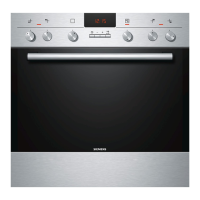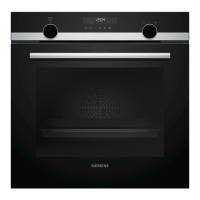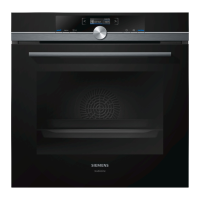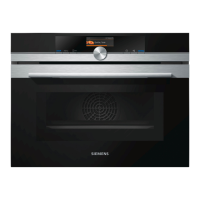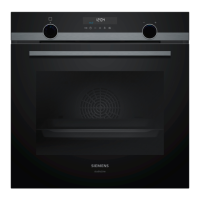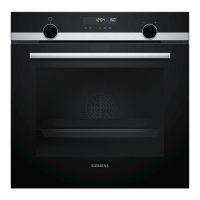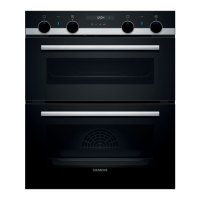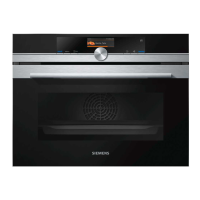How it works en
31
Vegetables and side dishes
This is where you can find information about preparing vegetable products that you can use as a side dish for your
meals.
Recommended settings
Vegetables and side dishes
Use the settings listed in the table.
Food Accessories/cook-
ware
Shelf posi-
tion
Type of
heating
Temperature
in °C/grill
setting
Cooking
time in mins
Grilled vegetables Universal pan 5 3 10–20
Baked potatoes, halved Universal pan 3 190–210 25–35
Potato products, frozen, e.g. chips, cro-
quettes, potato pockets, rösti
Universal pan 3 200–220 25–35
Chips, 2 levels Universal pan
+
Baking tray
3+1 190–210 30–40
Yoghurt
You can also use your appliance to make your own
yoghurt.
Making yoghurt
1.
Remove the accessories and shelves from the
cooking compartment.
2.
Heat 1litre of milk (3.5% fat) to 90°C on the hob
and then leave it to cool down to 40°C. Only heat
UHT milk to 40°C.
3.
Stir 30g yoghurt into the milk.
4.
Pour the mixture into small containers, e.g. small
jars with lids.
5.
Cover the containers with film, e.g. cling film.
6.
Place the containers on the cooking compartment
floor.
7.
Use the recommended settings when configuring
the appliance settings.
8.
After making the yoghurt, leave it to cool in the refri-
gerator.
Recommended settings
Yoghurt
Meal Accessory/cookware Shelf position Type of
heating/
function
Temperature
in°C
Cooking
time,
minutes
Yoghurt Cup/jar Cooking compartment
floor
- 4–5 hours
18.4 Special cooking methods and other
applications
Information and recommended settings for special
cooking methods and other applications, e.g. slow
cooking or preserving.
Drying
You can achieve outstanding drying results for the food
using hot air. With this type of preserving, flavours are
concentrated as a result of the dehydration.
The temperature and drying time depend on the type,
moistness, ripeness and thickness of the food. The
longer you leave the food to be dried, the better it will
be preserved. The thinner you cut the slices, the
quicker the drying process will be and the more flavour
the dried food will retain. Settings ranges are specified
for this reason.
Preparation for drying
1.
Only use unblemished, fresh fruit, vegetables and
herbs and wash them thoroughly. Line the wire rack
with greaseproof paper or parchment paper. Drain
the excess water from the fruit and then dry it.
2.
If required, cut the fruit into thin pieces or slices of
equal size. Place unpeeled fruit onto the dish with
the sliced surfaces facing upwards.
Ensure that neither fruit nor mushrooms overlap on
the wire rack.
3.
Grate vegetables and then blanch them. Drain the
excess water from the blanched vegetables and
spread them evenly on the wire rack.
4.
Dry herbs on the stem. Spread the herbs out evenly
and slightly heaped on the wire rack.
5.
Turn very juicy fruit and vegetables several times.
After drying, remove the dried fruit and vegetables
from the paper immediately.

